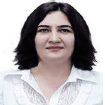International Journal of Computer Network and Information Security (IJCNIS)
IJCNIS Vol. 13, No. 3, 8 Jun. 2021
Cover page and Table of Contents: PDF (size: 297KB)
Multicriteria Decision Making using Analytic Hierarchy Process for Child Protection from Malicious Content on the Internet
Full Text (PDF, 297KB), PP.52-61
Views: 0 Downloads: 0
Author(s)
Index Terms
Kids safety, AHP, age groups, harmful contents, child online protection
Abstract
Modern children are active Internet users. However, in the context of information abundance, they have little knowledge of which information is useful and which is harmful. To make the Internet a safe place for children, various methods are used at the international and national levels, as well as by experts, and the ways to protect children from harmful information are sought. The article proposes an approach using a multi-criteria decision-making process to prevent children from encountering harmful content on the Internet and to make the Internet more secure environment for children. The article highlights the age characteristics of children as criteria. Harmless information, Training information, Entertainment information, News, and Harmful information are considered as alternatives. Here, a decision is made by comparing the alternatives according to the given criteria. According to the trials, harmful information is rated in the last position.
There is no child protection issue on the Internet using the AHP method. This research is important to protect children from harmful information in the virtual space. In the protection of minors Internet users is a reliable approach for educational institutions, parents and other subjects related to child safety.
Cite This Paper
Fargana J. Abdullayeva, Sabira S. Ojagverdiyeva, "Multicriteria Decision Making using Analytic Hierarchy Process for Child Protection from Malicious Content on the Internet", International Journal of Computer Network and Information Security(IJCNIS), Vol.13, No.3, pp.52-61, 2021. DOI: 10.5815/ijcnis.2021.03.05
Reference
[1] Law of the Republic of Azerbaijan “On protection of children from harmful information” October 30, 2018, http://www.e-qanun.az/framework/40764
[2] T.H. Kazimov, S.S. Ojagverdiyeva, Analysis of software tools that ensure the safety of children on the Internet// I Republican conference "Actual scientific-practical problems of software engineering", Bakı, 2017, pp. 305-307.
[3] I.Y Alakbarova, S.S.Ojagverdiyeva, Problems of safety of children and adolescents on the Internet and their solution using big data technologies //Telecommunications №4 за 2020, С. 23-31, doi: 10.31044/1684-2588-2020-0-4-23-31
[4] Rasim Alguliyev, Sabira Ojagverdieva,"Conceptual Model of National Intellectucal System for Children Safety in Internet Environment", International Journal of Computer Network and Information Security, Vol.11, No.3, pp.40-47, 2019.
[5] R. Tahir, F. Ahmed, H. Saeed, S. Ali, F. Zaffar, and C. Wilson, “Bringing the kid back into youtube kids: Detecting inappropriate content on video streaming platforms,” in IEEE/ACM International Conference on Advances in Social Networks Analysis and Mining, 2019.
[6] European Commission, “Protection of personal data,” http://ec.europa.eu/justice/data-protection/, November 24 2016
[7] Smahel, D., Machackova, H., Mascheroni, G., Dedkova, L., Staksrud, E., Ólafsson, K., Livingstone, S., and Hasebrink, U. (2020). EU Kids Online 2020: Survey results from 19 countries. EU Kids Online. https://doi.org/10.21953/lse.47fdeqj01ofo
[8] D. Patel and P. K. Singh, "Kids safe search classification model", 2016 International Conference on Communication and Electronics Systems (ICCES), Coimbatore, 2016, pp. 1-7, DOI: 10.1109/CESYS.2016.7914186.
[9] A.N.A Kamarudin, B. Ranaivo-Malançon and N.Musa, “Design and Implementation of PIAK: A Personalized Internet Access System for Kids”, Journal of Telecommunication, Electronic and Computer Engineering, Vol. 9 No. 2-9, pp. 49-57.
[10] Soumen Roy, Utpal Roy, and D. D. Sinha, "Protection of Kids from Internet Threats: A Machine Learning Approach for Classification of Age-group Based on Typing Pattern," Lecture Notes in Engineering and Computer Science: Proceedings of The International MultiConference of Engineers and Computer Scientists 2018, 14-16 March, 2018, Hong Kong, vol. 1, pp. 399-404.
[11] Uzun Y, Bicakci K, Uzunay Y (2015) Could We Distinguish Child Users from Adults Using Keystroke Dynamics? arXiv:1511.05672
[12] J. Zeniarja, R.R.Sani, A. Luthfiarta, H.Agus Susanto, E.Yudi Hidayat, A.Salam, L.Bayu Mahendra, "Search Engine for Kids with Document Filtering and Ranking Using Naive Bayes Classifier," 2018 International Seminar on Application for Technology of Information and Communication, Semarang, 2018, pp. 560-564, doi: 10.1109/ISEMANTIC.2018.8549707.
[13] Abdullayeva, F.J. and Ojagverdiyeva, S.S. (2019) ‘Deep learning based data sanitization method for child prodection on the internet’, Optical-Electronic Devices and Devices in Systems Image Recognition & Image Processing, ‘Recognition – 2019’/ XV International Scientific And Technical Conference, Kursk, Russia, pp.16–18.
[14] R.M Alguliyev, FJ Abdullayeva, SS Ojagverdiyeva, Protecting children on the internet using deep generative adversarial networks, International Journal of Computational Systems Engineering, vol. 6, №2, pp. 84-90.
[15] A. N. A. Kamarudin and B. Ranaivo-Malançon, “Simple Internet Filtering Access For Kids using Naive Bayes and Blacklisted URLs,” in International Knowledge Conference, 2015.
[16] R.Rajalakshmia, HansTiwari, JayPatel, Ankit Kumar and R.Karthik, Design of Kids-specific URL Classifier using Recurrent Convolutional Neural Network, Procedia Computer Science, vol.167, 2020, pp. 2124-2131
[17] M.Charalambous, P.Papagiannis, A.Papasavva, P.Leonidou, R.Constaninou, L. Terzidou, Th.Christophides, P.Nicolaou, O.Theofanis, G.Kalatzantonakis and M.Sirivianos (2020) A Privacy-Preserving Architecture for the Protection of Adolescents in Online Social Networks, arXiv:2007.12038v2 [cs.SI] 18 Sep 2020
[18] K.Papadamou, A.Papasavva, S.Zannettou, J.Blackburn, N.Kourtellis, I.Leontiadis, G.Stringhini & Sirivianos, M. (2020). Disturbed YouTube for Kids: Characterizing and Detecting Inappropriate Videos Targeting Young Children. Proceedings of the International AAAI Conference on Web and Social Media, 14(1), 522-533. Retrieved from https://ojs.aaai.org/index.php/ICWSM/article/view/7320
[19] Alghowinem S. (2019) A Safer YouTube Kids: An Extra Layer of Content Filtering Using Automated Multimodal Analysis. In: Arai K., Kapoor S., Bhatia R. (eds) Intelligent Systems and Applications. IntelliSys 2018. Advances in Intelligent Systems and Computing, vol 868. Springer, Cham. https://doi.org/10.1007/978-3-030-01054-6_21
[20] ElTayeby O, Abdullah M, Burlinson D, et al. Detecting drinking-related contents on social media by classifying heterogeneous data types. In: Benferhat S, Tabia K and Ali M (eds). Advances in artificial intelligence: from theory to practice. Cham: Springer, 2017, pp. 364–373.
[21] M. Velasquez and P. T. Hester. 2013. An analysis of multi-criteria decision-making methods. International Journal of Operations Research 10, pp. 56–66.
[22] R. Nagpal, D. Mehrotra, P. Kumar Bhatia, A.Sharma, Rank university websites using fuzzy AHP and fuzzy TOPSIS approach on usability. I.J. Information Engineering and Electronic Business, 2015, 1, pp. 29-36
[23] V. Listyaningsih, E.Utami, "Decision Support System Performance-Based Evaluation of Village Government using AHP and TOPSIS Methods: Secang Sub-district of Magelang Regency as a Case Study", International Journal of Intelligent Systems and Applications(IJISA), 2018, vol.10, No.4, pp.18-28.
[24] T. K. Das, D. P. Acharjya, M. R. Patra,"Multi Criterion Decision Making using Intuitionistic Fuzzy Rough Set on Two Universal Sets", International Journal of Intelligent Systems and Applications, vol.7, no.4, pp.26-33, 2015.
[25] D. J. Y. Tey, Y. F. Gan, G. Selvachandran, S. G. Quek, F. Smarandache, L. H Son, M. A. Basset, and H. V Long, “A Novel Neutrosophic Data Analytic Hierarchy Process for Multi-Criteria Decision-Making Method: A Case Study in Kuala Lumpur Stock Exchange”, Special Section on New Trends In Brain Signal Processing and Analysis, IEEE Access, Vol. 7, pp. 53687-53697, 2019.
[26] S. Paul, and B. K. Mishra, “Selection of next generation anti-virus against virus attacks in networks using AHP,” International Journal of Computer Network and Information Security, vol. 2, pp. 29- 35, 2013.
[27] T. L. Saaty, ‘‘How to make a decision: The analytic hierarchy process,’’ Eur. J. Oper. Res., vol. 48, pp. 9–26, Sep. 1990.
[28] Yan Liu, Xin Zhang, " Evaluating the Undergraduate Course based on a Fuzzy AHP-FIS Model", International Journal of Modern Education and Computer Science, Vol.12, No.6, pp. 55-66, 2020.
[29] Adel A. Nasser, Abdualmajed A. Al-Khulaidi, Mijahed N. Aljober, "Measuring the Information Security Maturity of Enterprises under Uncertainty Using Fuzzy AHP", International Journal of Information Technology and Computer Science, Vol.10, No.4, pp.10-25, 2018.

